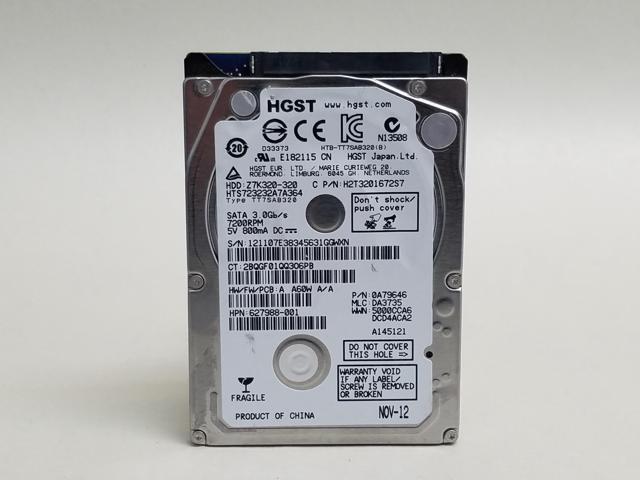
- HITACHI HARD DRIVE SATA 3.0 HTS723232A7A364 BLUETOOTH
- HITACHI HARD DRIVE SATA 3.0 HTS723232A7A364 SERIES
Those that use the keyboard with little or average strength won't notice this. On the right pressure with a finger can dent the surface a small distance. From the left to the middle it provides the user with a firm end stop. The keyboard supporting surface of the E320 does not lie firmly everywhere. Due to the low picture keys using these blind is not possible.

The smaller arrow keys don't stand out from the triangle of keys, which makes them appear squashed. The keys provide a crisp pressure point and a clear key travel (approx. Depending on the service type this package costs about 55 Euros (Bring-In), or 85 Euros (on location). The ThinkPlus warranty extension increases this to 3 years.
HITACHI HARD DRIVE SATA 3.0 HTS723232A7A364 SERIES
The standard warranty for the Edge series lasts for 12 months. The accessories only include a warranty leaflet and a short user guide. In this case users have to burn their own recovery DVDs (ThinkVantage restore). Recovery media are not included with the delivery. The data backup and restore features can also be accessed from this central tool.

The ThinkVantage-Tools incorporate the security, power, and system configuration. At least there is an APS sensor ( movement sensor for the hard drive, parks drive heads when shocked) and a Kensington Security Lock. A microphone mute button (upper row of keys) is also available.īusiness characteristics, such as a finger print reader, Computrace theft protection, and a marginally waterproof keyboard are not on board. In the Communications Utility the microphone can be optimised for one or more voices (conference).
HITACHI HARD DRIVE SATA 3.0 HTS723232A7A364 BLUETOOTH
Bluetooth 3.0+HS completes the package.įor internet telephony and video chat, the Edge E320 is equipped with a Webcam with a resolution of 1280 x 720 pixels (widescreen). The WLAN module supports the Draft-N standard, and the Ethernet controller supports Gigabit Ethernet. The SIM card has to be inserted under the battery. First and foremost comes the Ericsson F5521GW HSPA module for mobile internet access. The E320 provides all the communications technologies that are currently possible in a subnotebook. The complete base plate can be removed for this purpose, by removing a mere three screws. The E320 can easily be upgraded with RAM, or by swapping the hard drive for an SSD. Only using a significant amount of force were we able to dent the surface in the middle using a finger to create changes on the display. The upper side of the lid could hardly be dented in over a larger area (with a flat hand). Attempts to dent the surface also fail on the palm resting area, which lies solidly everywhere. The chassis base plate consists of metal and can nowhere be dented in. The plastic inside surfaces are also grippy, but aren't rubbery. Finger prints don't stand a chance on the decently glittery layer. The display lid surface is rubbery and feels slightly like satin. In these respects the Edge 13 (K685) and the Edge 11 (Intel, AMD) with metal hinges and a rigid case were significantly better.Ī positive aspect in contrast is the feel. In addition to this the noticeably bendable chassis doesn't make a good impression either. What we didn't like are the softly attached display hinges (no longer completely metal), which let the display wobble. The reviewed E320, we unfortunately have to say, doesn't exceed the robustness of an average consumer subnotebook. This was more stable and gave a more durable impression.

The older models Edge 13 (Intel, AMD) in contrast had a different chassis. Lenovo also let's the ThinkPad X121e (currently in for review) nudge closer to the Edge devices, since the build and look of the chassis are very similar and almost identical (X121e / E125). The Edge E320 is the bigger brother of the Edge E125 (AMD Fusion), and the sister of the E325 (Fusion, currently in for review).


 0 kommentar(er)
0 kommentar(er)
